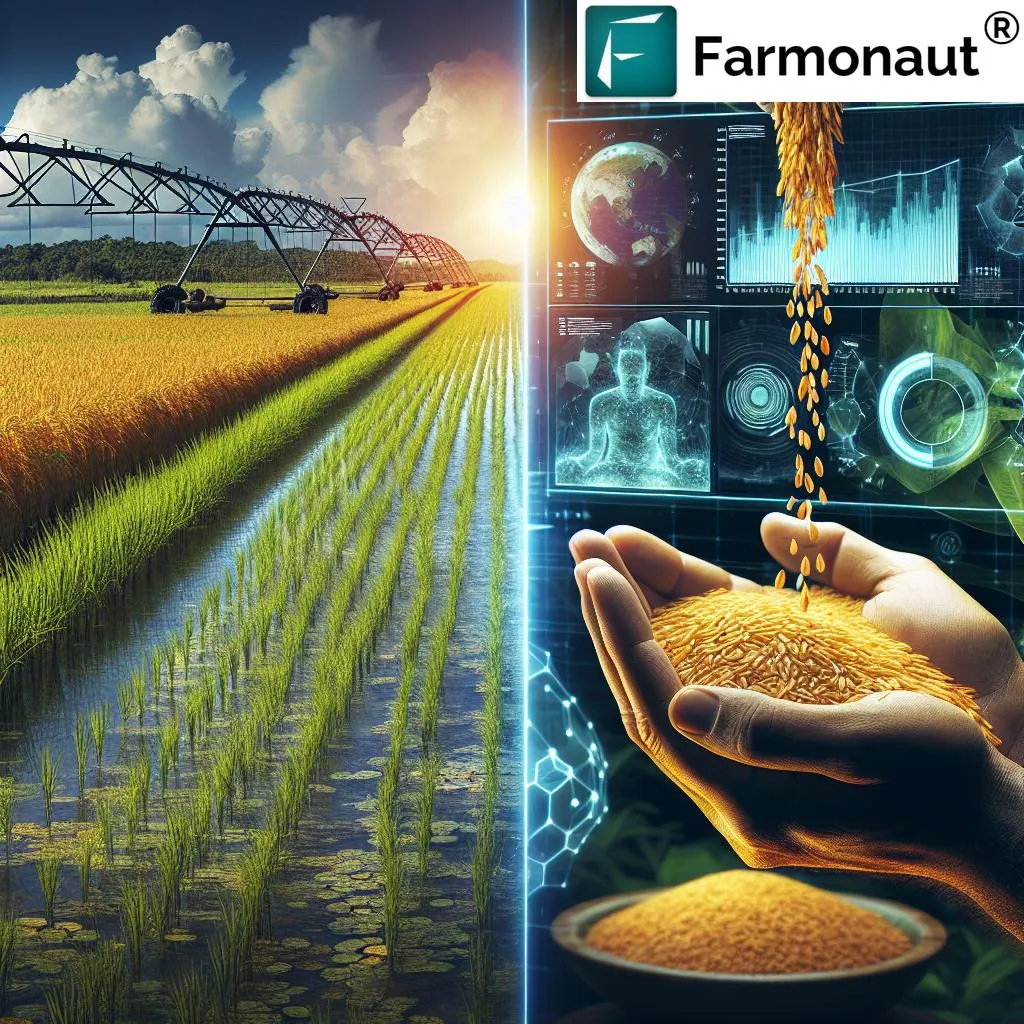In the heart of Peru, researchers are pioneering a new approach to rice cultivation that could revolutionize how we monitor and predict crop yields. Led by Jorge A. Fernandez-Jibaja of the Centro Experimental Yanayacu, part of the Instituto Nacional de Innovación Agraria (INIA), a recent study published in *Smart Agricultural Technology* (translated as *Intelligent Agricultural Technology*) combines agronomic data, vegetation indices, and meteorological information to offer a more precise and sustainable way to manage rice fields.
Rice, a staple crop for over half the world’s population, is particularly vital in tropical and subtropical regions. However, traditional methods of monitoring and predicting yields often fall short in providing the accuracy and timeliness needed for optimal crop management. Fernandez-Jibaja and his team sought to change that by integrating multiple data sources to create a comprehensive framework for phenological monitoring and yield estimation.
The study evaluated six rice varieties—Victoria, Esperanza, Bellavista, Puntilla, Capoteña, and Valor—across six phenological stages. The researchers collected field data, analyzed 20 vegetation indices (VIs), and incorporated meteorological parameters to gain a holistic view of the crops’ development. “By combining these diverse data sources, we can better understand the physiological transitions in rice and make more informed decisions,” Fernandez-Jibaja explained.
The results were promising. The Puntilla and Valor varieties showed greater tillering, with 9–28 tillers per plant, while Esperanza maintained stable chlorophyll values during ripening. The vegetation indices, which track the health and growth of the plants, increased from the seedling to the inflorescence emergence stage and then decreased during flowering and ripening, aligning with known physiological transitions in rice. Notably, significant differences in the Normalized Difference Vegetation Index (NDVI) were detected during ripening, highlighting the importance of continuous monitoring.
For yield estimation, the team employed advanced machine learning techniques, including principal component analysis (PCA) and the least absolute shrinkage and selection operator (LASSO), to enhance model efficiency and interpretability. Among the regression algorithms tested, support vector regression (SVR) demonstrated the highest predictive accuracy, with an R² value of 0.81 for the Bellavista variety at the maximum tillering stage. The Valor variety, meanwhile, presented the highest grain yield, at 13.70 tons per hectare.
This research underscores the potential of integrating multisource data with machine learning techniques for high-resolution phenological monitoring and varietal performance assessment. As Fernandez-Jibaja noted, “This approach not only increases productivity but also promotes sustainability, which is crucial for global food security.”
The implications for the agricultural sector are significant. By providing more accurate and timely information, farmers and agronomists can make better decisions about irrigation, fertilization, and pest control, ultimately leading to higher yields and more efficient use of resources. This could also have a positive impact on the energy sector, as more efficient agricultural practices can reduce the environmental footprint and contribute to more sustainable energy use.
Looking ahead, this research could shape future developments in precision agriculture. As technology advances, the integration of even more data sources—such as soil sensors, drone imagery, and satellite data—could further enhance the accuracy and reliability of crop monitoring and yield prediction. This could lead to a new era of smart farming, where data-driven decisions become the norm, and sustainability is at the forefront of agricultural practices.
In the meantime, the work of Fernandez-Jibaja and his team serves as a testament to the power of innovation in agriculture. By harnessing the potential of data and technology, they are paving the way for a more sustainable and productive future. As published in *Smart Agricultural Technology*, their findings offer a glimpse into the future of rice cultivation and the broader agricultural landscape.

